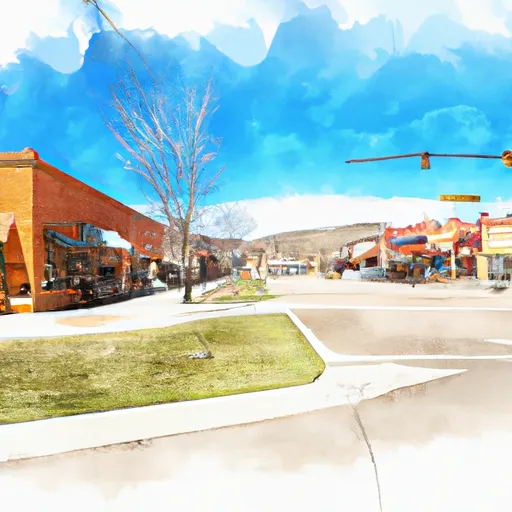-
 Snoflo Premium
Snoflo Premium
Get unlimited access to all our content
With no Ad interruptions! - Start Your Free Trial Login with existing account
Mc-Clave
Eden Index
Climate
9.0
•
Recreation
4.8
•
Community
1.5
•
Safeguard
5.6/10

McClave, Colorado is a small town located in the southeastern part of the state. The climate in McClave is characterized by hot summers and cold winters, with low humidity throughout the year. Summers typically bring temperatures ranging from the mid-80s to low 90s°F, while winter temperatures can drop to the low teens, occasionally even below zero. Precipitation in McClave is relatively low, with an average of around 14 inches per year, most of which falls during the summer months.
Hydrologically, McClave has access to the Arkansas River, which flows nearby, providing a source of water for the town and supporting various recreational activities. The river offers opportunities for fishing, boating, and rafting, with several access points along its course. Anglers can expect to catch species such as trout, catfish, and smallmouth bass.
In addition to water activities, McClave is surrounded by beautiful natural areas, making it an ideal destination for hiking, camping, and birdwatching. The town is situated near several state parks and wildlife areas, providing ample opportunities to explore and appreciate the stunning landscapes of southeastern Colorado.
What is the Eden Index?
The Snoflo Eden Index serves as a comprehensive rating system for regions, evaluating their desirability through a holistic assessment of climate health, outdoor recreation opportunities, and natural disaster risk, acknowledging the profound impact of these factors on livability and well-being.
Climate Health Indicator (CHI): 9.0
Mc-Clave receives approximately
345mm of rain per year,
with humidity levels near 50%
and air temperatures averaging around
12°C.
Mc-Clave has a plant hardyness factor of
6, meaning
plants and agriculture in this region thrive during a short period during spring and early summer. Most
plants will die off during the colder winter months.
By considering the ideal temperature range, reliable water supplies, clean air, and stable seasonal rain or snowpacks, the Climate Health Indicator (CHI) underscores the significance of a healthy climate as the foundation for quality living.
A healthy climate is paramount for ensuring a high quality of life and livability in a region, fostering both physical well-being and environmental harmony. This can be characterized by ideal temperatures, reliable access to water supplies, clean air, and consistent seasonal rain or snowpacks.
Weather Forecast
Streamflow Conditions
Upper Arkansas
Area Rivers
Upper Arkansas
Snowpack Depths
Upper Arkansas
Reservoir Storage Capacity
Upper Arkansas
Groundwater Levels
Recreational Opportunity Index (ROI): 4.8
The Recreational Opportunity Index (ROI) recognizes the value of outdoor recreational options, such as parks, hiking trails, camping sites, and fishing spots, while acknowledging that climate plays a pivotal role in ensuring the comfort and consistency of these experiences.
Access to outdoor recreational opportunities, encompassing activities such as parks, hiking, camping, and fishing, is crucial for overall well-being, and the climate plays a pivotal role in enabling and enhancing these experiences, ensuring that individuals can engage in nature-based activities comfortably and consistently.
Camping Areas
| Campground | Campsites | Reservations | Toilets | Showers | Elevation |
|---|---|---|---|---|---|
| Lake Hasty - John Martin State Park | 213 | 3,756 ft | |||
| Point - John Martin State Park | 65 | 3,884 ft |
Catastrophe Safeguard Index (CSI):
The Catastrophe Safeguard Index (CSI) recognizes that natural disaster risk, encompassing floods, fires, hurricanes, and tornadoes, can drastically affect safety and the overall appeal of an area.
The level of natural disaster risk in a region significantly affects safety and the overall livability, with climate change amplifying these risks by potentially increasing the frequency and intensity of events like floods, fires, hurricanes, and tornadoes, thereby posing substantial challenges to community resilience and well-being.
Community Resilience Indicator (CRI): 1.5
The Community Resilience Indicator (CRI) recognizes that education, healthcare, and socioeconomics are crucial to the well-being of a region. The CRI acknowledges the profound impact of these elements on residents' overall quality of life. By evaluating educational resources, healthcare accessibility, and economic inclusivity, the index captures the essential aspects that contribute to a thriving community, fostering resident satisfaction, equity, and social cohesion.

